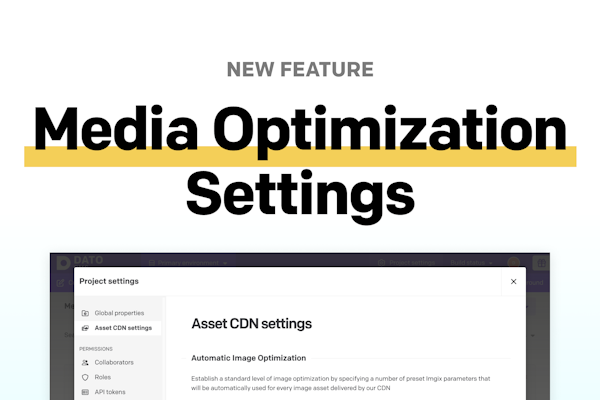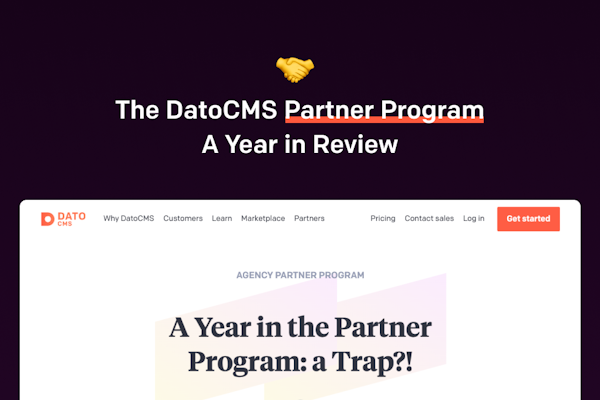The DatoCMS Blog
Your Headless CMS Shouldn't Break the Bank
Unlike traditional CMS platforms (and suites), which often operate on fixed pricing models, headless CMS pricing is intricately tied to usage and scalability.
Businesses get a more flexible and cost-effective approach to managing their content needs, and ideally, more transparency into how their CMS usage correlates to the pricing. Since the calculations of DatoCMS’s pricing tiers are often a conversation point with our customers, we thought about highlighting some of the components that go into these discussions to help shed some light on the mechanics behind it.
Headless CMS Pricing Models
Headless CMS (the cloud-based non-OSS ones) pricing models typically follow the common SaaS approach of pay-as-you-go structures or a fixed agreement (plus any overages) since most are priced based on the usage of certain metrics (like API calls, bandwidth, etc.) or features (roles, users, locales, etc.). Rather than paying a flat fee regardless of usage, businesses are charged based on the resources they consume. This usage-based model provides a level of flexibility that traditional pricing structures lack, allowing teams to scale their content operations according to demand without overpaying for unused resources.
Fun fact, we’ve noticed this approach works incredibly well for our own customers whose feedback, optimizations, and usage has helped us tweak our plans to the point where approximately 97% of them don’t generate overages at all.
Vendors typically see their feature set divided into 3 buckets – core features, operational features, and enterprise features.
At the heart of any headless CMS lie its core features, which include essential functionalities such as content creation, management, and delivery. These features are indispensable for any content-driven application.
Operational features are the more “commodity” ones, such as locales, encryption, image hosting, etc. They’re expected to be there, but they’re not what’s driving the $$$ discussions.
In contrast, enterprise features cater to larger organizations with more complex requirements, offering functionalities audit logs, post-sales services, custom SSOs, etc.. While enterprise features can add significant value for certain businesses, it's important to assess their necessity per conversation to avoid unnecessary costs and complexity.
Breaking down commonly charged features
Several features typically incur charges in headless CMS solutions, and it’s worth keeping an eye out for how your usage and use-case would impact each section:
API Calls: Pricing is often based on the frequency of API calls made to fetch or update content. This model aligns with the API-centric nature of headless CMS platforms, ensuring that businesses only pay for the resources they utilize. Typically most pricing tiers come with a range of included API Calls, with any extra usage being billed at the end of a cycle and not stopping operations to avoid disrupting the user’s content from being delivered. It’s also extremely important to optimize API usage on your side too - ensuring relevant caching policies, asset optimization, CDN usage, etc.
Bandwidth Usage: Fees are determined by the amount of data transferred between the CMS and end-users. Costs may vary depending on factors such as the volume of content served and the geographical distribution of users. It also makes a difference on the API capabilities and delivery, and whether the bandwidth is related to strings, images, videos, etc.
Storage Space: Charges relate to the storage space used for storing content assets such as images, videos, and documents. Careful assessment of storage requirements is crucial to avoid overpayment for unused resources.
Security Features: Advanced security features, such as custom SSO, custom roles for access control, and custom SLAs may come with additional costs. While these features are essential for safeguarding sensitive data, businesses must balance security requirements with budget constraints.
Transparency in pricing is important in the CMS market to prevent hidden costs from inflating the total cost of ownership. The CMS is quite often among the “essential” tools in one’s stack, and knowing that its price is scalable and predictable to correlate with the business value it provides offers some mental peace.
Now this doesn’t necessarily mean that a CMS won’t end up costing anywhere from $200/m to as high up as $250-500K+/m, but it’s important to know what that price tag includes in relation to your use case, and how you attach value to that.
At DatoCMS we believe that most of the $ value of a subscription lies in the actual feature requirements and usage (of core and operational features), and not in the (often) bloated post-sales aspects associated with enterprise features. No one wants to wake up one morning and see a spike of 10-15% on their CMS renewal fees just because a project scaled unexpectedly.
If you’re keen to understand some more specifics on the different pricing levers that go into getting set up with a Headless CMS, reach out and we'd be happy to share some more insights!


